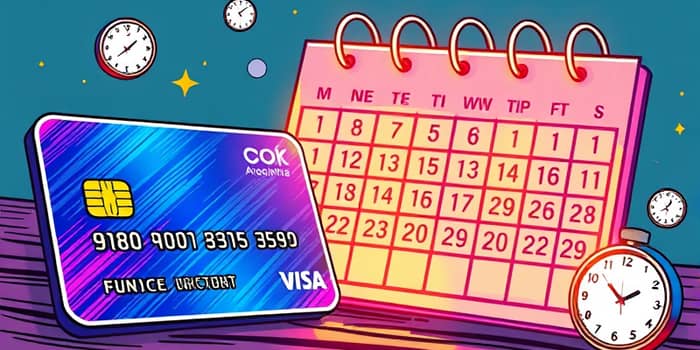
The credit card grace period is a critical feature that can save cardholders hundreds of dollars in interest charges each year. By understanding the nuances of payment deadlines and billing cycles, consumers can maintain healthier finances and avoid costly fees. This article unpacks the concept, mechanics, regulations, and strategies for maximizing the benefits of your card’s grace period.
Whether you’re a seasoned credit user or new to the world of plastic, mastering this timeline is essential. We’ll guide you through definitions, practical examples, expert tips, and key regulatory protections so you can confidently manage your credit account.
A credit card grace period is the window in which you can pay off new credit card purchases without incurring interest. This period runs from the end of your billing cycle—known as the statement closing date—to the payment due date. If you settle your statement balance in full within this interval, you can enjoy up to 55 days of interest-free credit.
It’s important to note that the grace period applies only to new purchases. Transactions such as balance transfers, cash advances, and convenience checks do not qualify. Understanding this distinction can help you plan payments and avoid unexpected costs.
Credit card accounts operate on a monthly billing cycle. When the billing cycle ends, all transactions during that period are tallied, and a statement is generated. This statement shows two crucial figures:
Once you receive your statement, the grace period begins. Paying the statement balance in full by the due date ensures no interest is charged on those purchases. If you carry a balance, the grace period is lost, and interest accrues from the purchase date.
Failing to pay the full statement balance by the due date triggers immediate consequences. Interest begins accumulating on new purchases starting from the date each transaction was made. This retroactive interest can drastically increase your cost of borrowing.
To regain your grace period, you must pay the entire outstanding balance. Only after a full-cycle payment in the next billing period will the no-interest window return. Partial payments alone will not restore the benefit.
Federal law, under Regulation Z, mandates a minimum of 21 days between your statement closing date and payment due date. In practice, most cards offer 21 to 30 days; some promotional or new-account offers extend to 55 days.
Payments are considered on time if they are received by 5 p.m. in the issuer’s stated time zone on the due date. If the due date falls on a weekend or holiday when payments aren’t processed, you get until 5 p.m. on the next business day. Always verify your issuer’s cut-off time and acceptable payment methods to avoid late fees.
Not all credit card activity qualifies for interest-free benefits. The grace period does not apply to cash advances, balance transfers, or convenience checks. These transactions incur interest immediately, usually at higher rates than regular purchases.
The Credit CARD Act and Regulation Z Section 226.5(b)(2)(ii) enforce consumer protections around credit card billing. Issuers must provide at least 21 days between statement delivery and payment due dates, and they cannot treat on-time payments as late.
If a payment arrives on time but is not credited properly, the issuer must correct any charges or fees in the following billing cycle. These provisions ensure transparency and fairness in the billing process.
Managing credit wisely involves more than just making payments; it requires strategic planning. Consider these expert tips to harness the full power of your grace period:
To keep your finances on track and protect your credit score, adopt these practical habits:
First, review your statement each month to verify charges and due dates. Mistakes or fraudulent activity can linger unnoticed if you skip this step. Second, maintain a buffer in your checking account to cover unexpected expenses.
Third, if you ever miss a due date, reach out to your issuer to request a one-time waiver. Many card companies are willing to forgive a late fee if you have a strong payment history.
Understanding and leveraging your credit card grace period can save you substantial interest charges and help you build a stronger financial foundation. By paying your statement balance in full and on time, you preserve this valuable benefit and maintain a positive credit profile.
Stay informed about your billing cycle, due dates, and issuer policies. Implement the expert strategies outlined here, and you’ll be well on your way to making your credit card work for you—rather than against you.
With knowledge, vigilance, and strategic planning, you can navigate payment deadlines confidently and keep your financial goals within reach.
References













